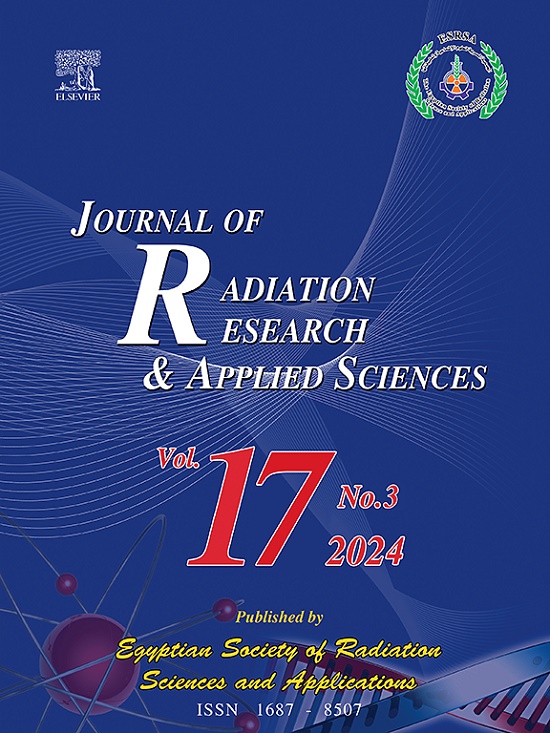卡森纳米流体在拉伸薄片上的生物对流研究进展:热辐射和活化能的影响
IF 1.7
4区 综合性期刊
Q2 MULTIDISCIPLINARY SCIENCES
Journal of Radiation Research and Applied Sciences
Pub Date : 2025-05-15
DOI:10.1016/j.jrras.2025.101598
引用次数: 0
摘要
纳米流体具有增强的热性能,使其在改善热系统内的传热性能方面非常有效。由于其独特的热物理特性,纳米流体在各种工程应用中引起了相当大的兴趣。目的研究卡森纳米流体在拉伸薄片上的磁流体动力学(MHD)流动,考虑热辐射、活化能、生物对流和活动微生物的影响。分析了布朗运动和热泳运动在传热传质中的作用。方法:通过相似变换将控制非线性偏微分方程(PDEs)简化为非线性常微分方程(ode)系统。利用MATLAB中的bvp4c求解器对这些方程以及相应的边界条件进行了数值求解。结果分析表明,增大的布朗运动参数促进了热扩散,而增大的路易斯数则抑制了传质。卡森流体参数降低了速度边界层厚度,导致剪切应力上升12.4%。此外,较高的普朗特数导致热边界层厚度减少21.7%,从而增强了散热。热电泳参数对纳米颗粒浓度有显著影响,浓度梯度增加15.3%。这些结果为优化基于纳米流体的热系统的传热和传质提供了有价值的见解。本文章由计算机程序翻译,如有差异,请以英文原文为准。
Advances in bioconvection of Casson nanofluids over a stretching sheet: Influence of thermal radiation and activation energy
Background
Nanofluids possess enhanced thermal properties, making them highly effective in improving heat transfer performance within thermal systems. Owing to their distinctive thermophysical characteristics, nanofluids have attracted considerable interest across various engineering applications.
Purpose
This study investigates the magnetohydrodynamic (MHD) flow of Casson nanofluids over a stretching sheet, accounting for the effects of thermal radiation, activation energy, bioconvection, and motile microorganisms. The roles of Brownian motion and thermophoresis in heat and mass transfer are also analyzed.
Method
ology: The governing nonlinear partial differential equations (PDEs) are reduced to a system of nonlinear ordinary differential equations (ODEs) through similarity transformations. These equations, along with the corresponding boundary conditions, are numerically solved using the bvp4c solver in MATLAB.
Results
The analysis demonstrates that an increase in the Brownian motion parameter promotes thermal energy diffusion, whereas a higher Lewis number inhibits mass transfer. The Casson fluid parameter reduces the velocity boundary layer thickness, resulting in a 12.4 % rise in shear stress. Additionally, a higher Prandtl number leads to a 21.7 % decrease in thermal boundary layer thickness, thereby enhancing heat dissipation. The thermophoretic parameter exerts a pronounced effect on nanoparticle concentration, yielding a 15.3 % increase in concentration gradients. These results offer valuable insights into optimizing heat and mass transfer in nanofluid-based thermal systems.
求助全文
通过发布文献求助,成功后即可免费获取论文全文。
去求助
来源期刊

Journal of Radiation Research and Applied Sciences
MULTIDISCIPLINARY SCIENCES-
自引率
5.90%
发文量
130
审稿时长
16 weeks
期刊介绍:
Journal of Radiation Research and Applied Sciences provides a high quality medium for the publication of substantial, original and scientific and technological papers on the development and applications of nuclear, radiation and isotopes in biology, medicine, drugs, biochemistry, microbiology, agriculture, entomology, food technology, chemistry, physics, solid states, engineering, environmental and applied sciences.
 求助内容:
求助内容: 应助结果提醒方式:
应助结果提醒方式:


